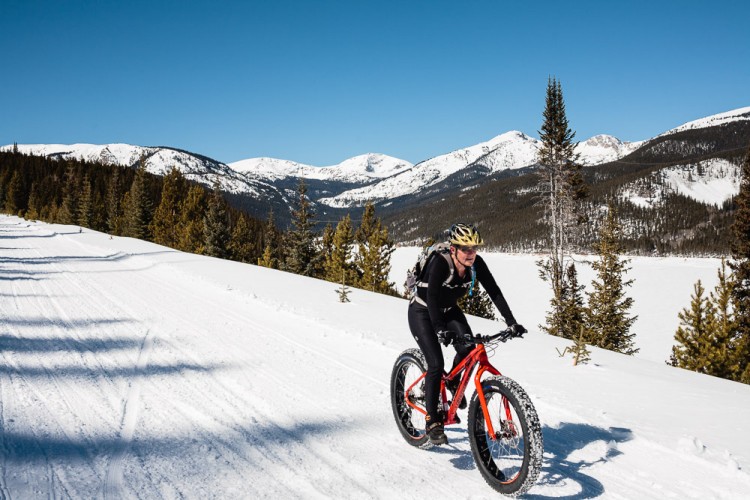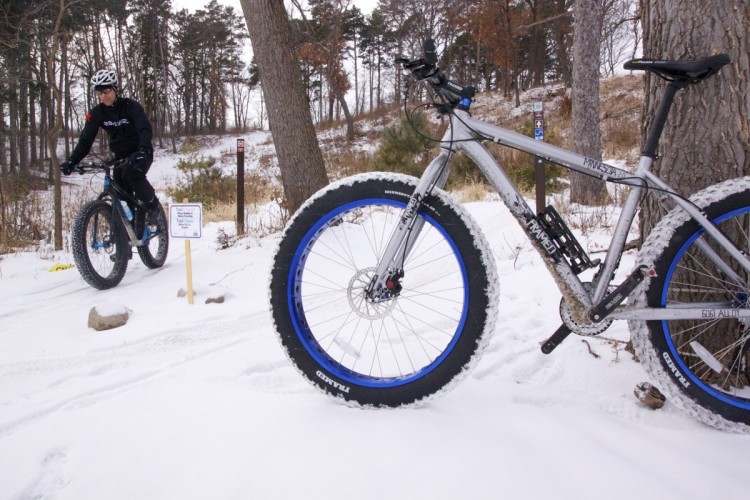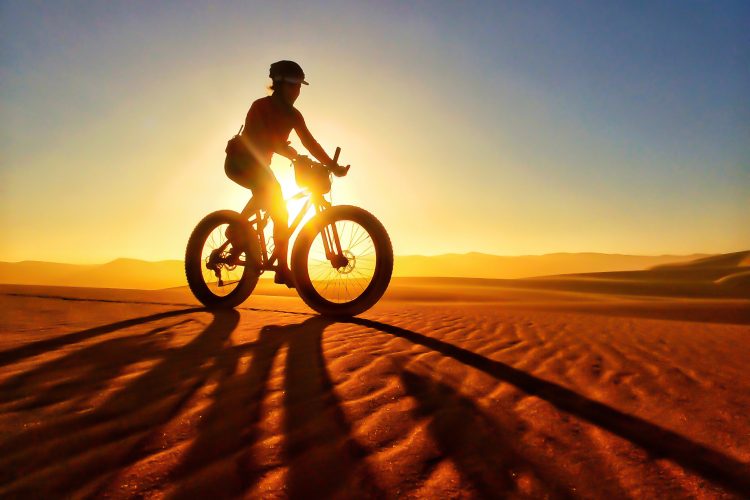
Editor’s Note: “Over a Beer” is a regular column written by Greg Heil. While Greg is the Editor in Chief for Singletracks.com, any opinions expressed in this column are his alone and do not necessarily represent the opinions of Singletracks.com.
Oftentimes I think we’re a bit flippant with our use of superlatives. And I’m as guilty as any writer. We call new products “awesome,” “ground-breaking,” “innovative,” “revolutionary,” and more. But how often do those new products live up to the superlatives that we ascribe to them? Not very.
Take, for instance, the word “revolution.” According to Merriam-Webster, here are some of the definitions of the word “revolution” that could most easily apply to mountain bike products:
- “a sudden, extreme, or complete change in the way people live, work, etc.”
- “a sudden, radical, or complete change”
- “a fundamental change in the way of thinking about or visualizing something”
- “a change of paradigm”
How often has a new mountain bike product of any sort fit any of these definitions above? In my opinion, rarely. Maybe, only once.
You see, most mountain bike technology changes slowly, and evolves over time. Take for instance the evolution of the mountain bike brake: we began with coaster brakes, evolved to rim brakes of various designs, mechanical disc brakes, and finally, hydraulic disc brakes. Even after the introduction of the modern hydraulic disc brake, incremental changes and improvements continued to be added, and in fact, that improvement still continues today.
But aside from the advent of the sport of mountain biking itself, what technological advancement has truly been a “revolution”? What has caused a sudden, extreme change in the way people ride mountain bikes? Has fundamentally transformed the way we visualize our sport? Has caused a change of paradigm so profound that previous knowledge taken as law must be questioned?
When you put it that way, there may be only one technological innovation that could truly qualify as a “revolution.” And that innovation is the fat bike.
Now, some of my colleagues located in more temperate climes *cough* Georgia *cough* may disagree with me. But many mountain bikers live in latitudes that are blanketed with snow several months–or even, many months–of the year. For those riders, mountain biking may have only been a 6-month-per-year activity… or less.
Here’s where the “revolutionary” part comes in: with the sudden and sweeping advent of fat bikes, the way most mountain bikers think about the sport has radically transformed. Indeed, there’s been a paradigm shift: no longer does the pedaling need to stop when the snow starts to fly! No longer are we limited by cold temperatures, white-covered ground, and soft conditions.
Until the fat bike was popularized, thousands–if not millions–of mountain bikers were forced to find a different way to stay in shape every winter. Whether it’s cross country skiing, snowshoeing, ice hockey, or–my favorite–downhill skiing or snowboarding, no matter what the sport may be, it’s just not quite the same as mountain biking.
But now, with the explosion of 5″ tires and lightweight, capable, and ever more affordable fat bikes to choose from, we’ve experienced a sudden, radical, and complete change in the way we visualize our mountain biking season. As the snow begins to accumulate here in Colorado, while I silently mourn the slow departure of high alpine singletrack for the season, I also rejoice thinking of the new routes and riding opportunities that lie ahead for this winter.
[see_also id=”191830″][/see_also]
Instead of winter signaling the end of the riding season, it instead marks a transition–a transition from the skinny tires to the wide tires. From the warm to the cold. From the light to the dark. And yes, while I would prefer that it just be summer all the time, if there’s one bit of wisdom I’ve acquired during my continued orbits around the sun, it’s that getting frustrated at the weather, fighting the change of the seasons, and allowing the inevitable onslaught of cold temperatures to frustrate and depress you is a futile struggle and a gloomy outlook on life.
The only way to live is to embrace whatever may come. To open your arms wide to the inevitable change of the seasons, the constant change in the natural world around us, the impervious march of time as the universe continues to wind down, down, down into ever-increasing entropy.
But despite the impending reign of chaos and the futility of fighting the seasons, with 5-inch tires we can now do one thing: we can keep riding our bikes 12 months a year!























31 Comments
Oct 20, 2016
Yes it all does get a bit murky as to what influenced what and to what degree, and to what degree all those offshoots changed the face of mountain biking. I don't own a fat bike and have no plans to get one, so they really haven't revolutionized much for me (although if anybody wants to throw a nice new 27.5+ my way, I'm all in!). I completely agree about 29ers. They completely changed the entire face of mountain biking in very short order.
But all these other things, dropper posts, 1x drivetrains, bigger wheels, etc. do not allow anyone to ride anything they hadn't ridden before. They can do it more efficiently, sure. They certainly have upped the fun factor. I love my dropper post, but everything I now ride with a dropper, I rode without one before I got one. Ditto biger hoops. All those things seem more evolutionary than revolutionary. The fat bike is the only thing on this list that allows anybody who wants to, to ride at times and places where they couldn't/wouldn't before.
So I see fat bikes as less reach, but more impact for those they do reach. In the overall balance, does that make them the "most revolutionary?" I can't say. It largely depends on what criteria you establish for measuring the level of revolution, especially market penetration vs new capability.
And Mongwolf's closing is really the bottom line. The great news is that we don't have to choose either/or! We can have it all if we devote the resources to it. The proliferation of technology has been dramatic and the choices are almost endless such that there's a bike out there for everyone--multiple bikes for many of us. Just a few years ago, whooda' thunk one could get a carbon fiber framed, disc brake equipped, full suspension fat bike with a 1x drivetrain and a dropper post? There's all these great things wrapped up in one package! It may not be what everyone wants, but it is there for those who do.
Oct 24, 2016
Oct 24, 2016
Oct 20, 2016
Fat bikes appear to be having a similar effect on mountain biking. The revolution isn't just about people switching to fat bikes exclusively; it must also include the move to mid-fats, which may be the single biggest trend of 2016, and probably 2017 as well. Without fat bikes demonstrating the benefits of more rubber, the mid-fat revolution would not have been born, just as without snowboarding, skiing wouldn't have moved aggressively to deeper sidecuts.
Personally, I'm more into other things which have been mentioned, like dropper posts, but I'm not sure I can extend that to all or even most riders. MId fats have even trickled down to department store bikes. Dropper posts haven't. Then you have all the other subsequent offspring like bike frames and forks which can accommodate different tire combinations.
When you consider all the second and third order effects, the fat bike revolution looks pretty big.
Oct 20, 2016
Oct 20, 2016
Oct 20, 2016
Dec 14, 2017
That is why I agree, the fat bike is a revolution!
Oct 24, 2016
Oct 24, 2016
-Yes, trails are already being made differently in some places, and designed specifically for fat bike grooming in winter, with wider corridors. In some places like New Mexico, sand-filled trails are being designed/constructed in places where normal mountain bikes couldn't physically go before.
The way riders ride:
-Defining the way somebody rides seems pretty nuanced--how do you go about proposing to define this? But I would argue that riders are indeed riding in different ways, namely by riding in different terrain than they could have attempted before.
Oct 26, 2016
I have two fat bikes currently, but the best one is the Scott Big Jon I just got last year. You can check out the full review of it here: http://www.singletracks.com/blog/mtb-reviews/scott-big-jon-fat-bike-long-term-review/
Thanks for all the comments Joel!!
Oct 26, 2016
Oct 26, 2016
Now do they NECESSARILY make every rider faster? Heck no. But they do make many things EASIER. As a result, many beginner riders are choosing fat and plus bikes as first bikes, because they can tackle more difficult trails with less-developed skills than they can on a standard-tired bike.
Oct 26, 2016
In conclusion, are fat bikes revolutionary? Do they allow a given rider to bike better? On sand and snow, absolutely. For most people on most trails? I don't think so. Fat bikes are revolutionary from a designers view, but not a riders view.
Thats just my two cents.
Oct 19, 2016
Oct 20, 2016
Oct 20, 2016
Oct 24, 2016
Oct 24, 2016
Oct 20, 2016
Oct 21, 2016
Fat bikes, to me, have done what 29ers did. They changed how people look at bikes and bike design. And created cottage industries in support of the sport. Look at the wheels, tires, bolt-on accessories for bike packing, etc. And look at the events, places people can ride, or times of year when you can get out but couldn't before.
A dropper post or brake just couldn't do that. Nor frame materials. A change in how we think about bikes, bike design, and style, a way to ride when we couldn't before ... that is a revolution.
Oct 24, 2016
Oct 14, 2018
Oct 21, 2016
Oct 19, 2016
Dec 14, 2017
Oct 19, 2016
Oct 24, 2016
Oct 24, 2016
Fat bikes borrowed tech from current mountain bikes to make a new category of bike, which is awesome. But as far as being the most significant revolution in the past decade, or ever, nope.
Oct 26, 2016
Oct 24, 2016
Neither of my fat bikes are setup tubeless. There's bit of a rift in the world of fat biking about whether or not tubeless is good or feasible for fat tires. While I know some of our writers run tubeless, some mechanics I've chatted with claim that the tire won't stay securely on the rim at extremely low pressures. As such, I haven't yet taken the jump to tubeless fat bike tires and while they aren't light, they still ride just fine.